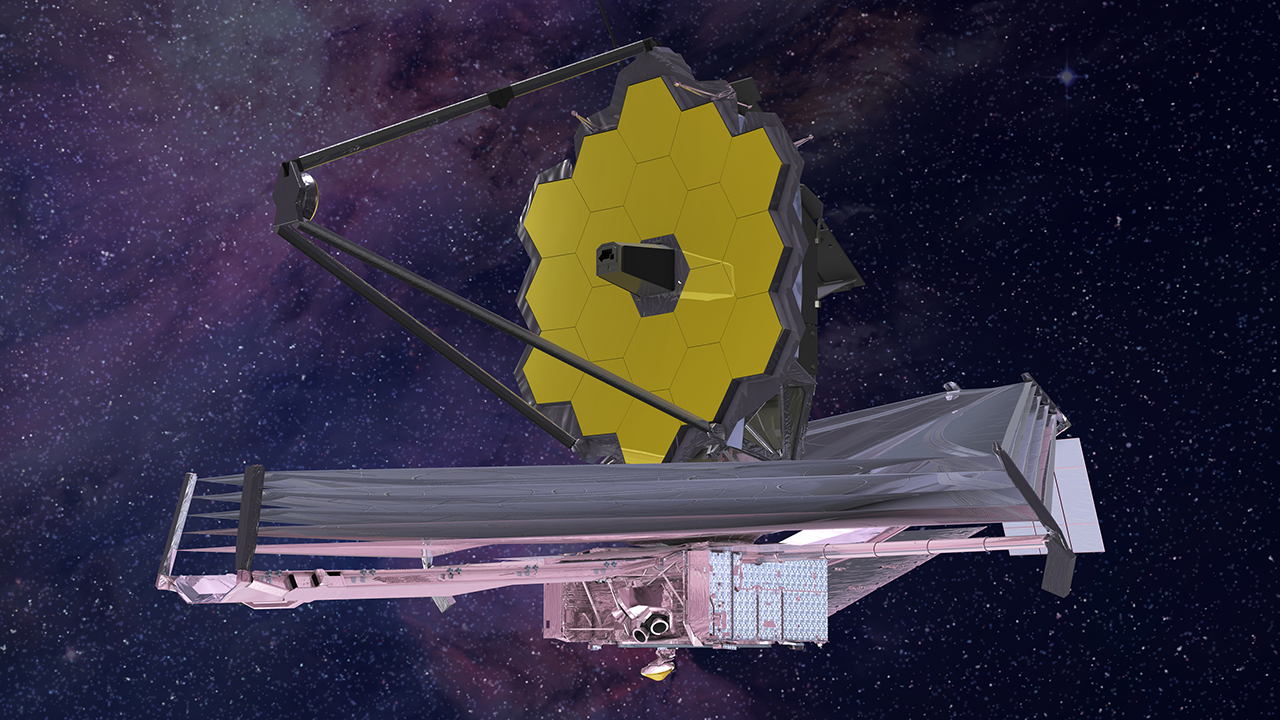James Webb Space Telescope still performing better than expected despite glitch, micrometeoroids
"We expected this, we're seeing it and we're still in good shape."

NASA's newest space telescope is hard at work despite an ongoing instrument glitch and continuing small micrometeoroid strikes.
The James Webb Space Telescope (JWST or Webb for short) has been in space for nearly 10 months and has been gathering science observations since July. Even this early in the observatory's tenure, it is already offering scientists a new view of the universe and performing better than expected. And that work is continuing apace despite a finicky wheel and a drizzle of impacts from tiny space rocks.
"We knew we were going to be getting micrometeoroid hits throughout the mission," Eric Smith, NASA project scientist for JWST, said Monday (Oct. 17) during a presentation to NASA's Astrophysics Advisory Committee. "We expected this, we're seeing it and we're still in good shape."
Gallery: James Webb Space Telescope's 1st photos
Webb is unusually vulnerable to such impacts, Smith noted. Unlike the Hubble Space Telescope, for example, JWST's primary mirror isn't housed in a protected tube. Instead, it's exposed to space and stretches across 21 feet (6.5 meters), which Smith compared to a catcher's mitt against more protected observatories.
At this point, JWST has experienced a total of 33 micrometeoroid events, according to Smith's slides. But the most damaging one came before JWST began science observations; in late May, a particularly large micrometeoroid struck the observatory's mirror, leaving its mark on one golden hexagon. The team estimates that a strike of that size should occur about once a year, Smith said.
"So we got that at month five," he said. "We haven't seen another one yet, so it's still consistent with the statistics that we expected."
Get the Space.com Newsletter
Breaking space news, the latest updates on rocket launches, skywatching events and more!
Smith noted that, at the current impact rate, Webb will still be meeting its five-year performance requirement 10 years into the mission. Scientists estimate that the observatory has enough fuel to operate for 20 years.
Although the team isn't too worried about the impacts, scientists are considering coordinating observations so that the mirror isn't facing straight into the direction the observatory is traveling to reduce micrometeoroid impacts, like turning away from a particularly heavy gust of wind. However, this measure would complicate the already-intricate process of piecing together JWST's observing schedule.
"It doesn't change, really, whether a target is visible; it just changes when it's visible," Smith said.
Meanwhile, the team is also addressing a glitch in the observatory's Mid-Infrared Instrument (MIRI). The instrument contains a grating wheel to focus on specific wavelengths of light when conducting medium-resolution spectroscopy, one of MIRI's four observing modes. JWST team members noted friction in the wheel in late August and paused medium-resolution spectroscopy to investigate the issue.
The team is now working to understand the cause of the issue, then will develop a response plan to be approved by an anomaly review board NASA convened for the incident.
"Once they're confident they understand why they measured this increased friction, they'll work out what to do next," Smith said. "They do anticipate recovering this, though."
Email Meghan Bartels at mbartels@space.com or follow her on Twitter @meghanbartels. Follow us on Twitter @Spacedotcom and on Facebook.
Join our Space Forums to keep talking space on the latest missions, night sky and more! And if you have a news tip, correction or comment, let us know at: community@space.com.

Meghan is a senior writer at Space.com and has more than five years' experience as a science journalist based in New York City. She joined Space.com in July 2018, with previous writing published in outlets including Newsweek and Audubon. Meghan earned an MA in science journalism from New York University and a BA in classics from Georgetown University, and in her free time she enjoys reading and visiting museums. Follow her on Twitter at @meghanbartels.









